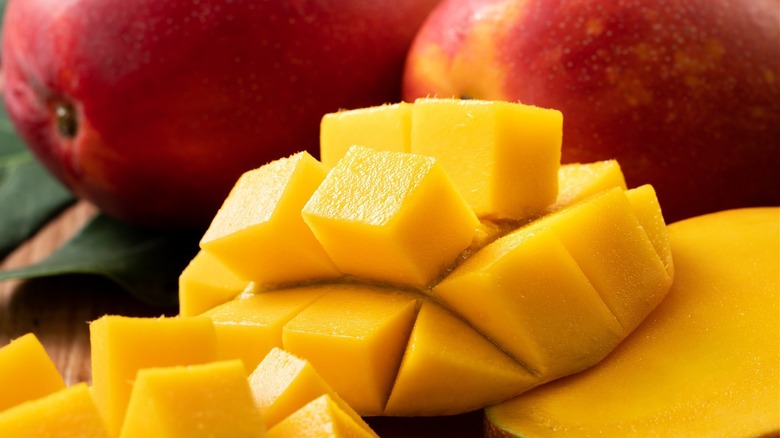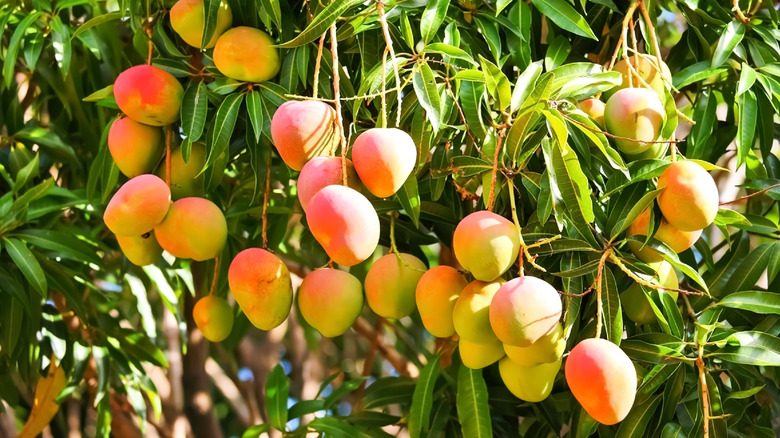The Majority Of US Grown Mangoes Come From These States
Buying locally grown produce is a smart way to support community farmers and small businesses, and to reduce the carbon footprint caused by trucking fruits and veggies long distances to markets. However, the growing seasons vary across the U.S., looking much different in the hot, dry areas of the South and West than they do in northern regions with long, cold winters. That means produce that can be grown locally in any given area will vary, too. Fans of fresh mangos, for example, who can't live without them for recipes like smoothies and salsas are forced to rely on trucked-in fruit, unless they happen to live in one of the few states that can grow them.
Mango trees are highly sensitive to cold; even a brief dip to below-freezing temperatures can decimate the trees and crop. The only continental states with large, consistently tropical growing climates needed for growing mangos, labeled by the U.S. Department of Agriculture as zones 10 and higher, are Florida and California. Mangos are grown in limited areas of the southern tip of Texas, too. Groves of mango trees can also be found on the islands of Hawaii and Puerto Rico.
Mangos at the store are most likely imported
Because the mango growing areas in the U.S. are so few, the crops and distribution from these growers are limited. There's a heavy reliance on imported mangos to make up the difference, which means the mangos at your grocery store are most likely not grown in the U.S.
Considering that mangos were first cultivated in the East, it should come as no surprise that countries in this region are the world's top producers of the fruit. Taking the top spot is India; mangos are grown in states all over the country, and it's estimated that India is responsible for roughly half of the world's mango imports. Other top producers of mangos in the East include China, Pakistan, Thailand, and Indonesia.
For the U.S., mango imports come from a country a little closer to home: Mexico, which is fourth on the list of top-producing countries of mangoes in the world. It's estimated that more than 85% of the mangos imported to the U.S. come from Mexico. The remaining imports of the fruit primarily come from South American countries like Peru and Brazil, and from Haiti.

